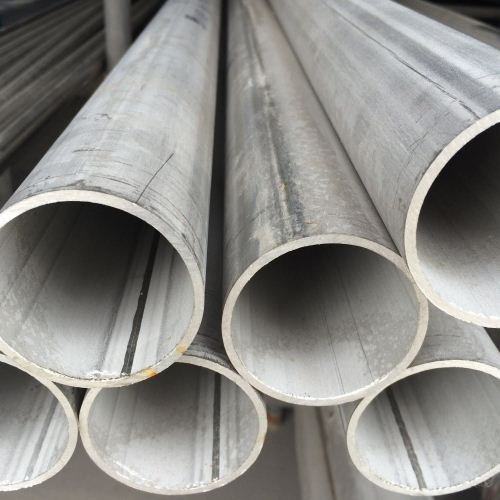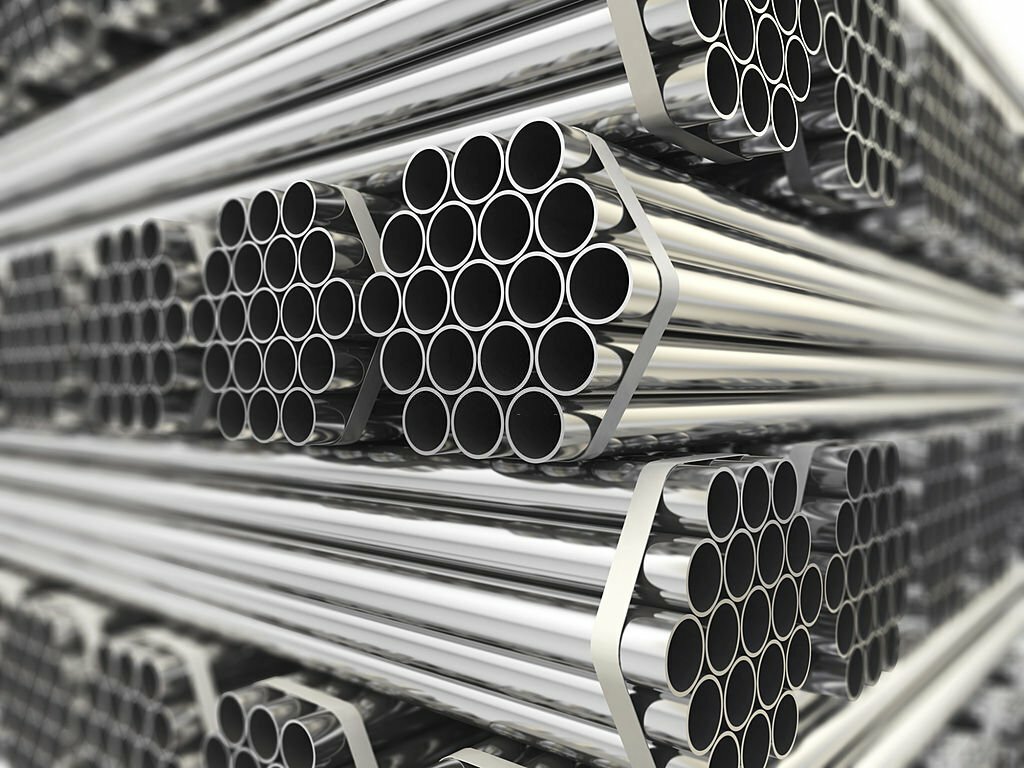In modern infrastructure & development, the choice of piping material plays a significant role. They take part in deciding steadiness, strength, and efficiency. Carbon steel Pipes & stainless steel pipes stand as two distinctive competitors in this field. Each offers unique benefits from its individual structures, properties, and applications. When choosing between these two pipes, it’s essential to understand “carbon steel vs stainless steel pipe.”
This comprehensive guide highlights the fundamental difference between cs and ss pipes. We will talk about their distinct properties, applications, and various types. This article especially benefits those looking for the ideal steel pipe for their project.
Carbon Steel vs Stainless Steel Pipe
Metal pipes are vital components in various industries. Here, carbon and stainless steel is the most common choices. Carbon steel is popular for its strength and cost-effectiveness. On the other hand, stainless steel provides strength and corrosion resistance. Understanding their properties helps you select the most appropriate material for specific applications.
Carbon Steel vs Stainless Steel Pipe: By Definition
Carbon steel pipes are composed primarily of iron and carbon. They offer excellent strength and affordability. A CS pipe is durable and versatile. Therefore, they are widely popular in industrial applications. This makes them suitable for transporting liquids & gases.
On the other hand, stainless steel is an iron alloy that is resistant to rust and corrosion. They are alloed with chromium and other elements. As a result, they provide excellent corrosion resistance ability. An SS pipe is ideal for applications where exposure to harsh environments is a concern.
Carbon Steel vs Stainless Steel Pipe: Material Composition
Let’s take a look at their material composition. You know, material composition determines the overall properties of steel. It also ensures the purity of the chosen steel (carbon steel vs stainless steel pipe).
- Carbon Steel Pipes are made mostly of carbon and iron, with carbon content ranging from 0.06% to 1.5%. The structural arrangement also contains manganese, sulfur, phosphorus, and hints of other composites. Well, based on these numbers, various grades are made for unique applications. For example, low-carbon steel contains 0.25% of carbon. On the other hand, medium and high-carbon steel contains 0.4% to 0.95% of carbon, respectively.
- Stainless Steel Pipes, on the other hand, come with a combination of iron, chromium, and nickel. There are also different components, like molybdenum. However, tempered steel pipes are famous for their corrosion-resistant properties. Popular stainless steel types include the 300 and 400 series. Regarding the 300 series, 304 and 316 SS pipe is the most popular. On the other hand, 409 and 430 are popular in the 400 series.
Carbon Steel vs Stainless Steel Pipe: Varying Properties
Carbon and stainless steel pipes have demand in numerous industrial applications. Each metal pipe is highly suitable for unique advantages. The primary factor that differs between these two metals is their varying properties. Let’s explore more.
Physical Properties
Physical properties mainly determine the material’s physical behaviour. For example, how does a carbon or stainless steel pipe behave under extreme temperatures? How about their electrical conductivity?
- Heat Resistance: Carbon steel generally provides excellent heat resistance. However, it might show diminished structural integrity at extreme temperatures. On the other hand, stainless steel offers more heat resistance ability.
- Corrosion Resistance is a chemical response that influences the reliability of a metal. This may occur when the metal encounters an electrolyte like water, oxygen, grime, or another metal. A CS pipe is more prone to erosion due to moisture & various natural factors. While on the other hand, the ss pipe offers corrosion resistance ability. Therefore, stainless steels are often suitable for outdoor applications.
- Electrical conductivity: Cabon steel pipe or CS pipe generally provides higher electrical conductivity. The increased carbon content in CS pipes typically enhances electrical conductivity.
Mechanical Properties
Mechanical properties typically determine the changes in the mechanical behaviour of the metal. For example, what kind of changes do you observe when you apply a certain stress on the cs pipe or ss pipe?
- Strength and Durability: Both carbon steel and stainless steel are known for strength and solidness. Carbon steel pipes are appropriate for applications requiring power.
- Melting Point: CS Pipe typically melts at 2597– 2900 degrees Fahrenheit. On the other hand, SS pipe melts at 2550– 2800 degrees Fahrenheit. Although, stainless steel has more heat resistance ability than carbon steel pipe.
- Formability & Machinability: Carbon steel is more formidable and machinable than stainless steel pipe. CS pipe’s malleable nature makes performing a precision machining process easy. However, the robust nature of SS pipes makes it challenging to perform various machining processes.
Carbon Steel vs Stainless Steel Pipe: Varying Types
Different types of steel types mainly depend on project requirements and budget. For example, stainless steel pipe usually is superior to carbon steel pipe. However, carbon steel is cheaper than stainless steel. Carbon steel might be a cost-effective alternative for your project if your applications meet its qualities. Different applications and economic concerns have led to numerous steel market varieties. Let’s explore more.
- Seamless pipes are typically made through a continuous manufacturing process. You may find four significant types of manufacturing seamless pipe. They are mandrel, mannesman plug, forging, and extrusion processes. Both carbon steel and stainless steel can be found in this form.
- Welded pipe: Steel pipes made through various welding processes are called welded pipes. These pipes are typically made from steel plates. As a result, it offers a cost-effective solution for many industrial applications. Carbon steel pipes are seen mainly in this form.

Carbon Steel Pipe
As the name suggests, these types of steel pipe have primarily carbon in their chemical composition. Well, based on different quantities of carbon, we can classify carbon steel into three major types.
- Low-carbon steel contains a carbon content of about 0.04%–0.30%. High ductility, hardness, and weldability make low-carbon steel ideal for hot and cold processing.
- Medium carbon steel contains a carbon content of about 0.04%. Medium carbon steel pipes are relatively hard and strong.
- High carbon steel contains a carbon content of Stainless Steel Pipe 0.8% to 1%. High-carbon steel is hard and strong.

Stainless Steel Pipe
Stainless steel pipes are also beneficial materials that are used in almost every industry throughout the world. They also offer a variety of varieties and grades. However, the most prevalent types utilized in all applications are as follows:
- Austenitic SS Pipes are recognized for excellent corrosion resistance. They have extensive use in food processing and drug industries. Mainly, 300 series are included in this category.
- Ferrite SS Pipes provide upright resistance to stress corrosion cracking. They are utilized in the automotive and architectural sectors. Mainly, 400 series are included in this category. The grades 409, 430, 430L, 434, 439, 442, 444 and 446 are most common in this case.
- Martensitic SS Pipes are prominent for their strength and hardness. They find applications in cutlery and surgical instruments. They also include some grades of 400 series. Grades 410, 420 and 440A are the most common in this case.
Carbon Steel vs Stainless Steel Pipe: Applications
Carbon steel (CS) pipes are widely used in the infrastructure, building, and oil & gas sectors. You know they are popular for their strength, affordability, and ease of manufacture. They are used to convey fluids, gases, and solids in various applications. Water supply, drainage systems, structural components, pipelines, and machines are noteworthy.
SS pipes are used in many industries for their corrosion resistance, durability, and adaptability. Chemical processing, water treatment, and oil refining require fluid transportation. The food and beverage sector, structural components, and automobile exhaust systems depend on them.
Is Low Alloy Steel the Same as Low Carbon Steel?
The composition of low alloy steel and low carbon steel differs. Low-alloy steel has additional alloying elements like manganese, chromium, or molybdenum. On the other hand, low-carbon steel has a small amount of carbon (usually 0.05% to 0.25%). Because of these additional components, low-alloy steel provides more strength than low-carbon steel. These enhancements make low-alloy steel well-suited for demanding applications.
Similarities Between Carbon Steel And Stainless Steel Pipe
CS and SS pipes, both prominent in modern applications, share a base composition of iron. Both have excellent strength, making them suitable for underlying reliability. They show excellent machinability, taking into account fabrication methods.
Moreover, the two kinds offer a different scope of shapes and sizes, taking care of specific venture requests. However, we commonly mix up between Low alloy steel and Low carbon Steel. Let’s check some of their similarities.
| Factors | Similarities |
| Durability | Both exhibit high durability. |
| Strength | Provide robust structural strength. |
| Versatility | Suitable for various industrial uses. |
| Availability | Widely available in different grades. |
| Cost-effectiveness | Both can offer cost-effective options. |
One’s Drawback Is Another’s Benefit: Which Is Right For Your Project?
Choosing a suitable material is crucial. In this case, you have to consider various factors. We have already discussed some of their properties, types, and distinct material composition. This section will highlight some significant disadvantages of carbon steel and stainless steel.
Disadvantages of Carbon steel pipe and how stainless steel pipe can be the alternative
CS pipes are susceptible to corrosion and compromised structural integrity at extreme temperatures. SS pipes provide alternatives due to excellent corrosion resistance, durability, and heat endurance.
Disadvantages of Stainless Steel pipe and how carbon steel pipe can be the alternative
The disadvantages of SS pipes lie in their higher cost and reduced thermal conductivity. As an alternative, CS pipes offer cost-efficiency and higher thermal conductivity.
Summary
The decision between carbon steel and treated steel pipes relies on a project’s demand. We must adjust properties like erosion resistance, strength, cost, and natural circumstances. The two materials have distinguishing benefits. They take special care of different applications across different businesses.
This comprehensive comparison explains carbon steel vs stainless steel pipe quality and uses. You can use it to make informed industrial and development decisions on these materials.

Leave a Reply
You must be logged in to post a comment.